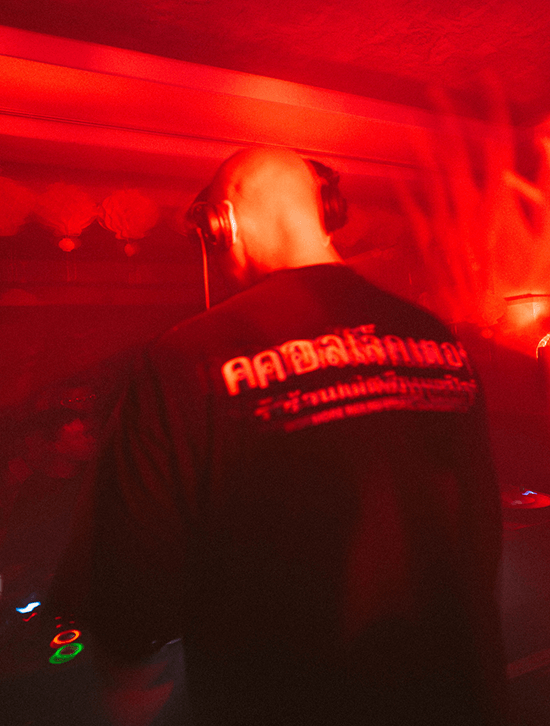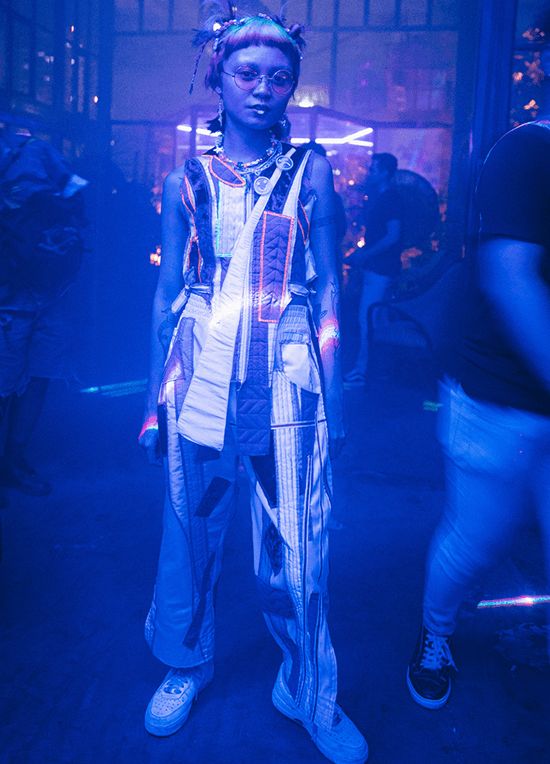There’s more to SadoMasoDisco than meets the ears
There’s always something so visceral about seeing someone own the dance floor, with full-bodied yes; shaking their shoulders and hips in wild abandon and surrendering their heart to whatever music they’re listening to until their energy peters out, like nothing else matters. It’s these little impassioned moments of release that SadoMasoDisco tenderly captures.
Catering to seasoned partygoers and nightlife neophytes, “Sado,” as its patrons call it, is a bustling rave series held at least once a month right in Metro Manila’s sprawling tentacles. It shies away from permanent venues and overpriced ticket rates, creates more space for local and international talents in the underground music scene, and carves out a community for people who simply can’t discard their dizzying love affair with music and dancing.

Having thrown its first party only back in December last year, Sado co-founder and DJ Karlo Vicente said that its inception in the local rave scene came spontaneously. What separates its events from the rest of the clubs and bars in the metro, according to Jeric Lim, also a DJ and co-founder of Sado, is how its crowd feels freer and mostly made up of local patrons. “Whenever I see the local crowd dance, it’s different. I don’t know how to explain it.”
Vicente also shared that they have a regular attendee who travels from Baguio to Manila just to enjoy the Sado experience. “And I think for two parties already, there’s someone (who came) from Davao. That’s sweet.”

Like Lim, DJ Carlos Bondoc also observed a form of liberty in his Sado experience. “On the dance floor, everyone is on equal ground. Even the DJs become part of the crowd once they’ve completed their respective sets. The international guest DJ is no exception to this either. We’re all here to have a fun time, getting lost in light and sound, and to make sure everyone feels comfortable and safe while we’re at it. It’s all love, for music and for each other.”

Bondoc added that this “kind of energy is rare here in Manila.” Part of the reason why is that most nightlife spaces are marred by issues of gender-based discrimination and dress codes—which often put queer people in peril, despite the passage of the “Safe Spaces Act” in 2019— as well as a lack of creative freedom for DJs and artists, who are forced to cave in to limiting sound aesthetics invoked by most club owners.

So it’s important for Sado’s organizers to ensure their patrons’ safety above anything else. “We don’t enforce dress codes,” said Vicente. “Just don’t be an a**hole.”
On the dance floor, everyone is on equal ground. Even the DJs become part of the crowd once they’ve completed their respective sets. The international guest DJ is no exception to this either. We’re all here to have a fun time, getting lost in light and sound, and to make sure everyone feels comfortable and safe while we’re at it. It’s all love, for music and for each other.
This space to express himself away from many prying eyes is what attracts Paul Jatayna, a seasoned raver, to Sado’s parties. “I love fashion a lot and I love techno a lot, so it’s a perfect combination.”
“Nightlife is a way for me to explore myself more ‘cause I’m queer. It’s super important for every (queer) individual to find a space to explore themselves more because queerness is about movement,” added Jatayna, who is also one of the minds behind That Elephant Party, another rave community established by and for LGBTQ+ members.

Apart from having the freedom to come as they are, the patrons, of course, gather to enjoy and satisfy their thirst for music. And what’s good about Sado is that it has no single sound; DJ Javier Pimentel explained, “They’ve brought such a diverse array of DJs from abroad as well as local acts. Besides that, Jeric and Karlo’s tastes and influences also can’t be pinned down to one genre, so it’s always exciting when they choose which DJ is coming and the support lineup with it.”

“Sado’s sound always changes but they make sure that the DJs are good, and that the feeling of being there is intimate, safe, and immaculate. I think there have been a few tracks that have constantly been played during Sado, but what’s great is that the DJs always find a way to bring these tracks in and out in their own way, making each time these songs were heard uniquely theirs.”
As a photographer for Sado, Pimentel has a particular eye for sensitivity. “I like to just be low-key moving around without making people conscious. I like to capture the party as discreetly and naturally as possible. My photography is very sensitive, so when I capture people at a party, I make sure it’s appropriate when to capture them, especially since we are living in a social media age.”

Christal Chung, another DJ who has played at a Sado event, described the experience as intimate. “There are times when I’d dance with my friends or be amidst the crowd, and there are times when I just go to the side and enjoy my own presence alone with the music. I think having a minimal crowd maintains a space where you can experience meditation on the dance floor, and that for me is what makes it intimate.”
This intimacy also applies to how Chung decides on her setlist. “I don’t take DJing too seriously because it might take away the joy from it. I personally just choose the tracks that I deeply enjoy and curate them accordingly. My top priority is for the crowd to enjoy as much as I do, and for them to hear something new, so I play music that empties the mind and makes the body move.”
As far back as the 1990s, Manila has already shaped a rich rave culture, holding a space where music, fashion, and dance could not only thrive but also intersect. SadoMasoDisco, in a sense, traces these roots but, in the same breath, forges new ways to disrupt people’s ideas of the underground scene. Eclectic and welcoming, Sado also attempts to do away with norms and rules that confine local rave spaces to mainstream establishments and to those with much more purchasing power, which is to say, there’s more to this tight-knit community than meets the ears.
Setting foot at a Sado party provides some kind of transcendence: to be able to dance like it’s nobody’s business, lay bare the most delicate parts of yourself, and disappear in a sea of bodies, sweat-drenched and all.
Asked about how long he wants to keep going to Sado’s parties as a regular patron, Jatayna said, “I can’t find a reason why I will not go.”



